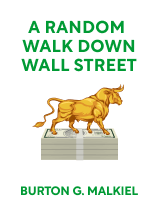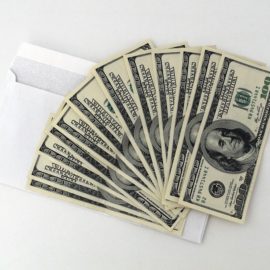

This article is an excerpt from the Shortform book guide to "A Random Walk Down Wall Street" by Burton G. Malkiel. Shortform has the world's best summaries and analyses of books you should be reading.
Like this article? Sign up for a free trial here .
What is a speculative bubble? How has irrational optimism caused some of the biggest stock market crashes in history?
A speculative bubble is a sudden rise in stock price fuelled by public speculation and unfounded optimism. From the tulipmania of 17th Century Holland to the more recent “dot-com” crash, speculative bubbles have led to some of history’s biggest financial disasters. When it comes to speculative bubbles, some get lucky but most are left holding the bag.
Learn about speculative bubbles below.
Speculative Bubbles and Castle-in-the-Air Thinking
The castle-in-the-air theory of asset valuation holds that an asset is only worth what someone else will pay for it. In other words, no asset has an “intrinsic value” that can be determined analytically or mathematically; rather, the value of an asset is purely psychological—it’s worth whatever the majority of investors think it’s worth.
A castle-in-the-air investor makes her money by investing in stocks she thinks other investors will value.
With the castle-in-the-air theory, the challenge is timing. The successful castle-in-the-air investor needs to buy an asset just before mass enthusiasm causes its price to rise (and sell before that enthusiasm wanes).
Speculative bubbles, of course, are examples of the castle-in-the-air theory run amok. In a bubble, investors completely disregard firm foundations for fantastical notions of assets’ values, often with disastrous results. And while some investors are savvy enough—or lucky enough—to sell just before the crash comes, most are left holding the bag.
Speculative Bubbles: The Role of Finance Professionals
Although speculative bubbles are partly caused by public speculation and optimism, the role of finance professionals can’t be understated.
Given the dangers presented by speculative bubbles, novice investors have turned to finance professionals—portfolio managers—to handle their investments. The thinking is that these professionals, backed by esteemed and successful financial institutions, won’t be swayed by the madness of the crowd.
The truth, however, is that financial institutions, and the human capital they employ, are just as susceptible to irrational optimism as we are. That optimism typically manifests itself in the “price-earnings multiple” applied to a firm’s common stock—that is, the number by which a stock’s earnings is multiplied to determine the price of the stock. Deriving this number is not an exact science: The personalities and cognitive biases of securities analysts can play a role, and all too often a hot new issue (initial public offering, or IPO) will cause institutional investors to adopt castle-in-the-air thinking.
A note about IPOs: It’s worth remembering that the people selling shares in an IPO are the company’s managers themselves. In other words, an IPO is timed to take advantage of favorable earnings, good buzz, or both, and minimize flaws in a company’s business model or long-term prospects.
Example: The Dot-Com Bubble
Driving the absurdly bullish attitude toward tech stocks during the dot-com bubble were the finance professionals with whom many Americans trust their life savings.
One major moral hazard that encouraged financial professionals’ magical thinking was the porous boundary between Wall Street firms’ research and investment banking arms. An investment company’s analysts are supposed to work on behalf of investors, communicating information as truthful and accurate as possible to the ones risking their money. A firm’s investment banking business, on the other hand, caters to corporate clients who benefit from inflated valuations.
To boost tech stocks’ prices, financial analysts developed an array of specious metrics for valuing companies. Rather than examine boring balance-sheet mainstays like revenues and profits—both of which, in the case of many new start-ups, were nonexistent—analysts priced stocks on the basis of website visits and the amount of time shoppers spent on a particular webpage.
Drugstore.com, for example, was valued at a high of $67.50 based largely on the fact that 48% of the people visiting the site were “engaged shoppers”—visitors who spent more than three minutes viewing the site. The only problem was that few of these “engaged shoppers” actually bought something. A year after its high in 2000, Drugstore.com was a “penny” stock.
Additionally, the 2008 financial crisis was, by and large, the handiwork of finance professionals.
A Lesson to Be Learned
One might imagine that with 300 years’ worth of economic experience, during which societies suffered steep recessions and depressions due to speculative bubbles, humanity would have improved its mechanisms for recognizing and mitigating those bubbles. Not so. In fact, the crashes of the early 2000s—the internet bubble at the beginning of the century and the real-estate bubble 10 years later—illustrate that castle-in-the-air thinking is just as prevalent today as it was in 18th-century Holland.
The investing principle we should take away from any speculative bubble, the internet and housing bubbles not least among them, is this: There is no “sure thing” or “get rich quick” in the market. Invest in industries that have profit-making and profit-sustaining potential, rather than industries that purport to transform society. Avoid getting caught up in the hype of a new sector or technology; stay calm and keep your portfolio as broadly diverse as possible.

———End of Preview———
Like what you just read? Read the rest of the world's best book summary and analysis of Burton G. Malkiel's "A Random Walk Down Wall Street" at Shortform .
Here's what you'll find in our full A Random Walk Down Wall Street summary :
- A comprehensive and entertaining introduction to the world of finance
- Practical investment principles that work for every skill level
- The advantages of index investing






